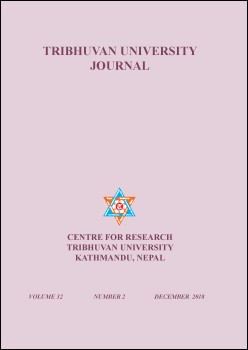Blending Myth and Modernity in the Global Chinese Cinema: The Hong Kong Action Hero in Zhang Yimou-Directed Hero
DOI:
https://doi.org/10.3126/tuj.v32i2.24702Keywords:
Chinese-Hong Kong connection, myth, history, martial arts, Action heroAbstract
Zhang Yimou’s Hero presents an action hero, yet in a slightly different cinematic mode than that of Stephen Chow-directed Shaolin Soccer to blend myth and modernity. In Yimou’s martial arts cinema, Jet Li-starred Nameless hero uses martial arts to combat the king’s adversaries, including Donnie Yen-starred Long Sky, Maggie Cheung-starred Flying Snow and Tony Leung Chiu-Wai-starred Broken Sword in the service to the Qin Dynasty (221 BC – 207 BC). The warrior hero’s indigenous body art helps the Qin Dynasty transform the smaller warring kingdoms into a powerful Chinese Empire, a strong foundation of modern China with economic and military superpower. Like their western counterparts, including T1000 and Neo, the Hong Kong action heroes, such as the warrior hero and the Qin King have been refashioned in the Hollywood controlled twentieth-century popular culture. Different from their Hollywood counterparts in actions, the Hong Kong action heroes in Hero primarily use their trained bodies and martial skills to promote the Chinese civilization, an adaptation of the Hollywood tradition of technologized machine body. Reworking of myth and archetype in Nameless’s service to the Qin Dynasty and the emperor’s mission to incept the Chinese Empire, the Hong Kong action heroes appear on screen, a blend of tradition and modernity. The film industry’s projection of the Chinese history with the legendary action heroes, including Nameless soldier and the Qin King globalizes the indigenous Chinese culture by using modern electronic digital technology, a resonance of the western technological advancement.
Downloads
Downloads
Published
How to Cite
Issue
Section
License
This license enables reusers to distribute, remix, adapt, and build upon the material in any medium or format for noncommercial purposes only, and only so long as attribution is given to the creator.
© Center for Research, Tribhuvan University

